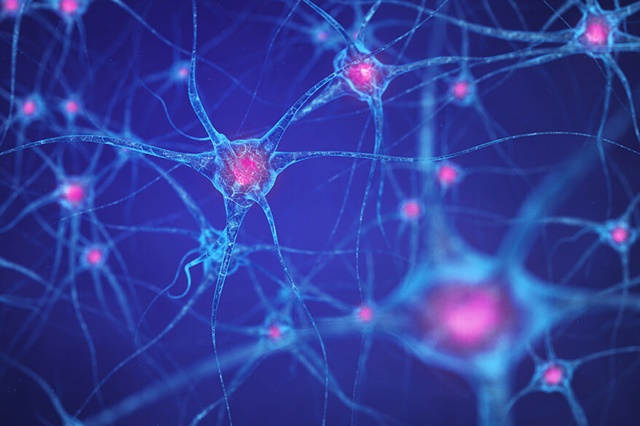10 Dec. 2021. Neuroscience researchers designed a process for delivering gene therapies through the blood stream, but targeting only brain cells of lab animals. A team from California Institute of Technology in Pasadena, the biotechnology company Capsida Biotherapeutics Inc. in Thousand Oaks, California, and other institutions describe their discovery in yesterday’s issue of the journal Nature Neuroscience.
While gene therapy is emerging as a promising technique for treating inherited diseases, it faces a continuing problem of delivery to affected genes, without causing off-target adverse effects. A favorite method for delivering gene therapies is adeno-associated viruses or AAVs, benign and naturally occurring microbes that infect cells, but do not integrate with the cell’s genome or cause disease, and generate at most a mild immune response. AAVs, however, can be sidetracked from their intended targets by interacting with other cells or tissue while traveling through the body.
To address this problem, the CalTech and Capsida researchers created engineered AAVs with an outer protein shell, known as a capsid, designed to make AAVs interact only with the target cells, in this case neurons or nerve cells in the brain. A team led by neuroscience and biomedical engineering professor Viviana Gradinaru altered components in a protein known as VP3 found of the capsid encasing an AAV already engineered to cross the blood-brain barrier.
The researchers further engineered the AAV to avoid interacting in the liver, where many off-target interactions would likely occur. The team first tested the engineered AAV, code-named AAV.CAP-B10, in lab mice, but also in marmosets, a more complex mammal. The results show AAV.CAP-B10s, injected intravenously, avoid liver cells in these lab animals with delivery or tropism into their neurons. The researchers say this targeted delivery in marmosets’ brains, while avoiding the liver, is a sign the technique will work with even higher-order mammals such as non-human primates, or monkeys.
Non-invasive delivery method
“Results from this research show that introducing diversity at multiple locations on the AAV capsid surface can increase transgene expression efficiency and neuronal specificity,” says Gradinaru in a CalTech statement. “The power of AAV engineering to confer novel tropisms and tissue specificity, as we show for the brain versus the liver, has broadened potential research and preclinical applications that could enable new therapeutic approaches for diseases of the brain.”
Gradinaru is a co-founder of Capsida Biotherapeutics, a two year-old company that licenses the Gradinaru lab’s research for further development and commercialization. Also co-founders of Capsida are Nicholas Flytzanis and Nick Goeden, now chief scientist and chief technology officer respectively of the company, and first authors of the Nature Neuroscience paper.
“The technology opens up the potential for safer and more effective therapeutic possibilities not achievable with traditional AAV gene therapy,” says Flytzanis in a Capsida statement. “Many gene therapy companies use surgical approaches to administer CNS medicines, but our engineered non-invasive approach provides the possibility for a broader, more convenient option to treat genetic diseases.” The company plans to advance the technology next year, with the goal of an investigational new drug application, in effect a request to FDA to conduct clinical trials, late in 2022.
In June, Science & Enterprise reported on a collaboration between Capsida Biotherapeutics and Crispr Therapeutics in Zug, Switzerland and Cambridge, Mass. to design gene-edited therapies to treat the rare genetic disease Friedreich’s ataxia and familial amyotrophic lateral sclerosis, an inherited form of ALS.
More from Science & Enterprise:
- Oxford, GSK Partner on New Tech for Neuro Diseases
- Crispr Licensed for Eye Disease Gene Therapies
- Precision Neuroscience Company Starts-Up, Raises $500M
- Gene Therapy Delivery Company Gains $26M in Early Funds
- Biotech Start-Up Gains $90M for Neurodegenerative Diseases
* * *


 RSS - Posts
RSS - Posts
[…] Engineered Virus Delivers Brain-Targeted Gene Therapy […]